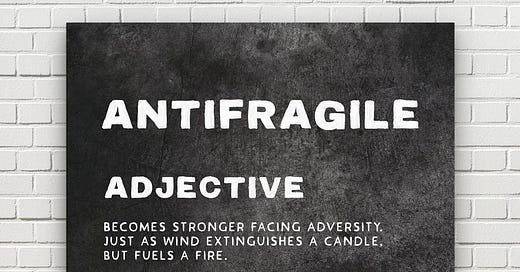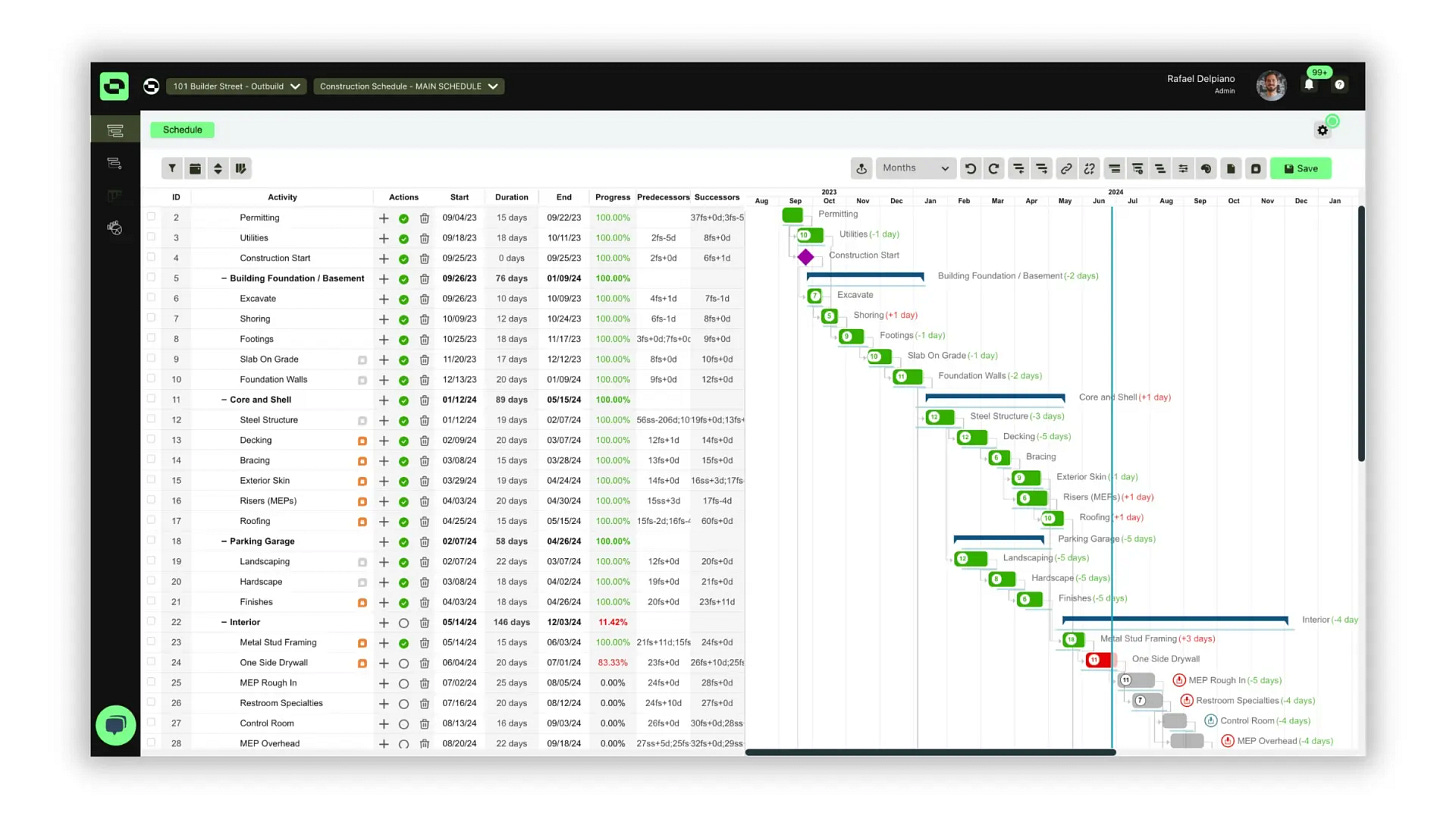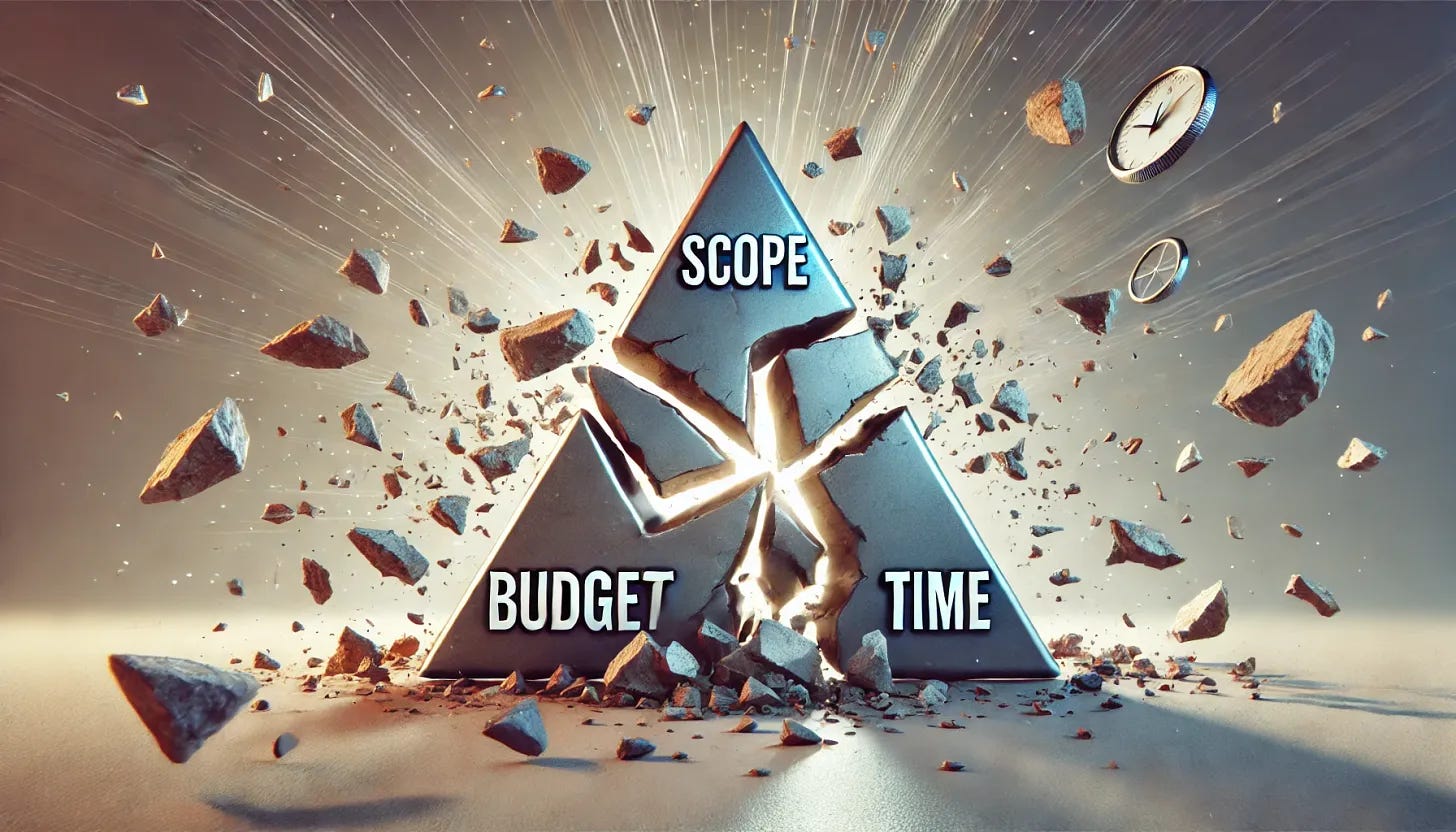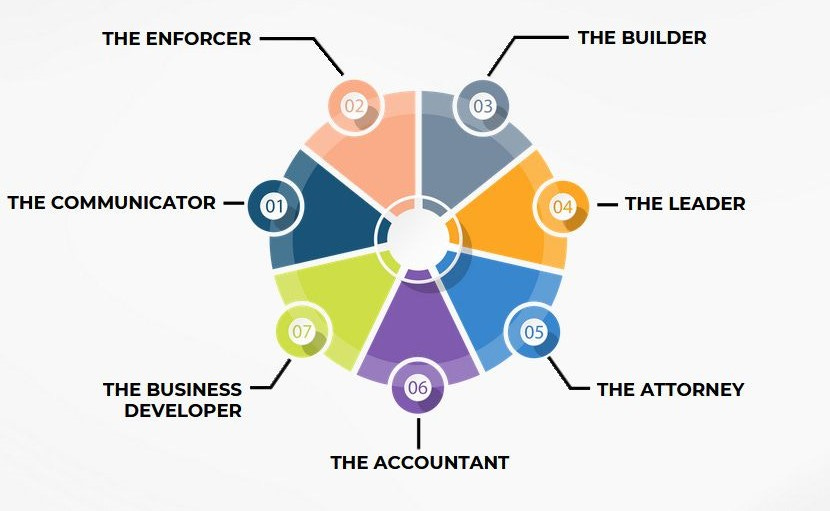What is Antifragile Project Management?
A framework for building projects and people that gain from disorder.
👋 Hey, Kyle here! Welcome to The Influential Project Manager, a weekly newsletter covering the essentials of successful project leadership.
Today’s Overview:
Construction is chaos. Even the most carefully planned projects can be derailed overnight by labor strikes, storms, or supply chain failures.
Traditional project management is fragile. Rigid schedules and fixed budgets crumble under real-world volatility, exposing projects to failure.
Antifragile Project Management is the answer. Learn how the 7 Archetypes of leadership can help you turn uncertainty into a competitive advantage.
🏗️ Today’s issue is brought to you by Outbuild!
Helping projects prevent delays to stay on schedule.
Outbuild is designed for one thing: to make construction scheduling simple, connected, and effective. It’s the trusted choice of top contractors. Here’s why:
✅ User-Friendly: Intuitive drag-and-drop features let your team get started immediately without any long training sessions.
✅ Collaborative: Everyone—from trade partners to PMs and PEs—can log in, plan their work, and communicate directly in one centralized platform.
✅ Integrated: Outbuild syncs effortlessly with Procore and others, keeping all your project workflows in one place.
✅ Real-time Insights: Powerful reporting and analytics track progress, delays, and resource usage, empowering you to make fast, informed decisions.
Outbuild lets you manage projects better so you can focus on what truly matters.
👉 Book a live demo (30 day free trial included). iPM subscribers get a 15% discount on the first year license.
💥 What is Antifragile Project Management?
Filed under: Project Management, Leadership & Managing People
Construction projects rarely go as planned—you know it, I know it, we all know it.
Even the most carefully crafted schedules—where every trade is perfectly sequenced and every contingency considered—can fall apart in an instant. A seasoned superintendent once told me how his schedule, which took weeks to develop, was undone overnight by a labor strike, a storm, and a bankrupt supplier.
Believe it or not, this is normal. And it exposes the fundamental flaw of traditional project management: It assumes perfect order, in a world of constant chaos.
We fall prey to the planning fallacy—our tendency to underestimate time, costs, and risks despite knowing better. Optimism bias and social pressure push us to believe, "This project will be different" or "This plan is perfect," but Murphy’s Law always holds: If something can go wrong, it will.
Traditional project management is built around rigid schedules, fixed budgets, and tightly planned resources. But in construction, variation is the only constant. Weather shifts, supply chain breakdowns, regulatory changes, and last-minute client decisions disrupt even the best-laid plans.
What if, instead of planning for order, we built systems and behaviors that allow us to thrive in any condition?
That’s the promise of Antifragile Project Management.
Introducing Antifragility
What does it mean to be antifragile?
In his book Antifragile: Things That Gain from Disorder, Nassim Nicholas Taleb defines “antifragile” as systems or individuals that get stronger when exposed to stress, shocks, and uncertainty.
Fragile systems break under pressure.
Robust systems resist change.
Antifragile systems grow stronger from adversity.
Think of the Hydra from mythology—cut off one head, and two grow back in its place. This is antifragility in action. Instead of relying on rigid, optimistic plans, Antifragile Project Management builds resilience, discipline, and adaptability into every layer of leadership and execution.
The foundation for this new way of leading is captured in the 7 Archetypes of Antifragile Project Management—a behavioral roadmap for leading projects through uncertainty.
The 7 Archetypes of Antifragile Project Management
To build a project that thrives in uncertainty, project leadership must be antifragile.
An archetype is a model that represents a specific set of behaviors, characteristics, and values. Each of these seven archetypes plays a critical role in project success, with three core pillars that define its approach to decision-making, leadership, and execution.
Together, these archetypes create a high-performance project environment—one that doesn’t just survive disruptions, but gets stronger because of them.
This framework isn’t about having all the answers. It’s about wearing the right hat at the right time and asking the right questions.
Let’s walk through each archetype to understand it more clearly.
Archetype 1: The Communicator
Strong communication keeps projects on track and teams aligned.
The 3 Pillars of The Communicator:
Precision: Messages are delivered with exact clarity, leaving no room for confusion.
Situational Awareness: Adapt communication to the audience—whether in the field or the boardroom.
Alignment: Keeps teams moving in the same direction with remarkable meetings, structured updates, and a “shared consciousness”.
Construction is complex—teams, vendors, and stakeholders all need the right information at the right time. The Communicator breaks down complexity into clear, actionable steps so nothing gets lost in translation. Through effective meetings, documentation, and jobsite reports, they make sure everyone knows what’s happening, what’s next, and what needs fixing.
A strong communicator turns complex plans into coordinated action.
Archetype 2: The Enforcer
Accountability is the foundation of safety, quality, and schedule discipline.
The 3 Pillars of The Enforcer:
Training & Coaching: Develops teams through continuous training and hands-on coaching.
Accountability: Sets and enforces clear expectations so that everyone is responsible for their role.
Culture of Excellence: Establishes high-performance standards and does not tolerate mediocrity.
The Enforcer keeps the project running by holding people accountable. They use systems like daily checklists, huddles, quality control inspections, and jobsite audits to make sure nothing slips through the cracks. Safety, quality, and timeliness are non-negotiable.
The Enforcer creates a disciplined environment where success is the only option.
Archetype 3: The Builder
The Builder bridges the gap between design and execution, turning plans into reality.
The 3 Pillars of The Builder:
Technical Knowledge: Has deep expertise in building codes, safety regulations, blueprint interpretation, and essential trade skills.
Scheduling & Planning: The ability to develop, update, and sequence production plans to keep all trades working together efficiently.
Lean Thinking: Applies lean construction methods to minimize waste, optimize workflows, and maximize value.
The Builder knows how to turn drawings into reality. They deeply understand logistics, trade coordination, and execution, ensuring schedules work in the field—not just on paper. With a problem-solving mindset, they adjust in real time to keep materials, manpower, and equipment flowing.
The Builder transforms ambitious designs into high-quality, on-time construction.
Archetype 4: The Leader
A project’s success or failure starts and ends with leadership.
The 3 Pillars of The Leader:
Extreme Ownership: Takes full responsibility for every outcome. No excuses. No one to blame.
Teamability: Builds high-trust teams that prioritize collective success over personal gain.
Emotional Strength: Stays calm, composed, and decisive under pressure.
The Leader sets the tone. They know projects don’t fail because of bad luck—they fail because of bad leadership. Great leaders remove roadblocks, rally their teams, and see challenges as opportunities to improve.
The Leader turns obstacles into momentum for success.
Archetype 5: The Attorney
Contracts, risk, and regulations protect the project when managed correctly.
The 3 Pillars of The Attorney:
Risk Intelligence: Identifies and mitigates risks before they become major issues.
Negotiation: Skillfully negotiates contracts that balance risk, opportunity, and fairness.
Compliance: Ensures all project activities meet legal, safety, and regulatory requirements.
Legal clarity protects projects from costly disputes. The Attorney translates contracts into actionable strategies and ensures compliance with safety, labor, and environmental laws. With well-negotiated terms and clear dispute resolution mechanisms, they protect the project from unnecessary exposure.
The Attorney turns legal complexities into a shield for the project.
Archetype 6: The Accountant
A financially healthy project is a successful project.
The 3 Pillars of The Accountant:
Cash Flow: Monitors cash flow to keep project financially stable and well-funded.
Expense Management: Tracks costs in real time and eliminates wasteful spending.
Business Acumen: Uses financial literacy, analytical skills, and strategic thinking to make informed business decisions.
A project without cash flow control is at risk of failure. The Accountant ensures that every dollar is accounted for and that budgets align with reality, not just estimates. They monitor cost reports, analyze financial data, and forecast trends to anticipate risks before they become financial disasters.
The Accountant ensures financial discipline drives project success.
Archetype 7: The Business Developer
Long-term success depends on strong relationships and future opportunities.
The 3 Pillars of The Business Developer:
Depth: Builds deep, meaningful relationships with clients, suppliers, and partners.
Strategic Positioning: Stays ahead of market trends to spot new opportunities.
Earned Reputation: Earns the respect, trust, and admiration of peers by consistently delivering results with integrity and professionalism.
Successful project managers don’t just finish jobs—they create future opportunities. The Business Developer leverages relationships, expands networks, and positions their team for long-term growth.
The Business Developer turns every successful project into the next big opportunity.
A Future Built on Antifragility
Project management is changing. Are you ready?
For too long, project management has relied on fragile systems—rigid plans, fixed budgets, and unrealistic schedules. And in an industry where 70% of projects fail, sticking to outdated methods only raises your chances of becoming another statistic.
That’s why I’m on a mission to redefine project leadership.
Over the next several newsletters, I’ll break down:
The 7 Archetypes of Successful Project Leadership—a framework for leading with confidence in unpredictable environments.
The high-leverage systems and technology that reinforce antifragility in projects.
A self-assessment tool to help you identify where to focus and how to improve.
The moment you stop chasing certainty and start preparing for the unexpected, everything changes.
Welcome to the journey of becoming an antifragile leader.
Welcome to a new era in construction project management.
Until next week,
Kyle Nitchen

Whenever you're ready, there are 5 ways I can help you:
Get my first book! No Bullsh*t Project: A Project Manager’s Guide to Successful Project Leadership
Upgrade your scheduling software. Experience the future planning system for construction and real estate development. iPM subscribers get a 15% discount on the first year license.
Get my full toolbox (free). Access 30+ software and hardware tools I'm using today.
Learn Takt Planning. Elevate your skills as a scheduler, planner, and lean builder with the Takt Planning & Control online course. Use code "Influentialpmtakt" for 30% off.
Advertise in my newsletter. Put your brand in front of 6,800+ construction project managers, leaders, and execs. (Booked out 8 weeks)










There's been a lot of refinement. Great work, Respect Kyle.